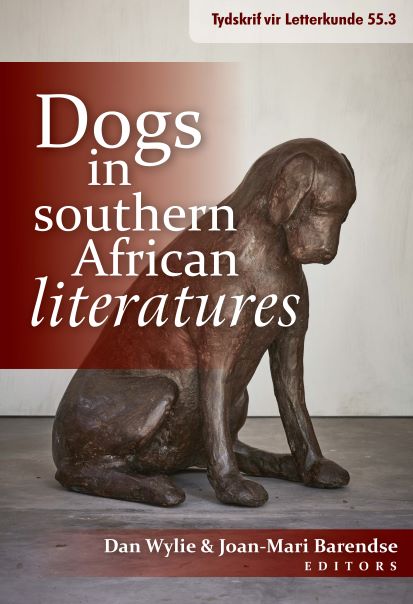Dog guides as witnesses with specific reference to Miles and Houellebecq
DOI :
https://doi.org/10.17159/2309-9070/tvl.v.55i3.5505Mots-clés :
animal studies, dogs, John Miles, Michel HouellebecqRésumé
Since Wild Dog first crawled from the Wet Wild Woods and laid his head on Woman’s lap, he has helped man, not only to hunt and protect, but also as guide. A guide with enhanced senses in the physical world who could find a way across unmarked landscapes, a clever empathic being who could lead man to certain places or to specific individuals. No wonder then that the best-known ancient dog deities accompany humans as guides, often on their way to the afterlife. Dog guides—not to be confused with guide dogs—have remained a constant feature of the representation of dogs in literature, reflecting as much of the nature of these dogs as of the nature and needs of the humans they attend. In this way, the human-animal relationship also reveals how the solipsistic tendencies of human self-definition limits our capacity for being in the world. In the two contemporary novels that form the basis of my enquiry, La Possibilité d’une île (2005) by Michel Houellebecq and Op ’n dag, ’n hond (2016) by John Miles, the agency of dog guides introduces an intriguing element of distancing, reminding us that the self has meaning only in relation to another and that human concerns are not absolute.
Téléchargements
Références
Barnes, Julian. Nothing to be frightened of. Vintage, 2009.
Camilleri, Andrea. The Montalbano Mysteries: Three Crime Novels of Sicily. Trans. Stephan Sartarelli. Picador, 2013.
Houellebecq, Michel. La Possibilité d’une île. Éditions Fayard, 2005.
Houellebecq, Michel. Non réconcilié. Gallimard, 2014.
Kipling, Rudyard. “The Cat that Walked by Himself” in Just so Stories. Vintage Books, 2008.
Luellon Bolton, Chelsea. Lord of Strength and Power: Ancient Hymns for Wepwawet. Lulu.com, 2017.
Miles, John. Op ’n dag, ’n hond. Human & Rousseau: Kindle Edition, 2016.
Mouawad, Wajdi. Anima. Actes Sud, 2012.
Nietzsche, Friedrich. Werke in drei Bänden. (Die fröhliche Wissenschaft, Drittes Buch). Carl Hanser: Band 2, 1954.
Wegner, Mary-Ann Pouls. “Wepwawet in Context: A Reconsideration of the Jackal Deity and its Role in the Spatial
Organization of the North Abydos Landscape” in Journal of the American Research Center in Egypt. Vol. 43,
, pp. 139–150.
Wilkinson, Toby A. H. Early Dynastic Egypt. Routledge, 1999.
The Qur’an. . English translation Talal Itani.
Téléchargements
Publiée
Numéro
Rubrique
Licence
(c) Copyright Tydskrif vir Letterkunde 2018

Ce travail est disponible sous licence Creative Commons Attribution - Partage dans les Mêmes Conditions 4.0 International.


 https://orcid.org/0000-0001-6465-6584
https://orcid.org/0000-0001-6465-6584


.png)